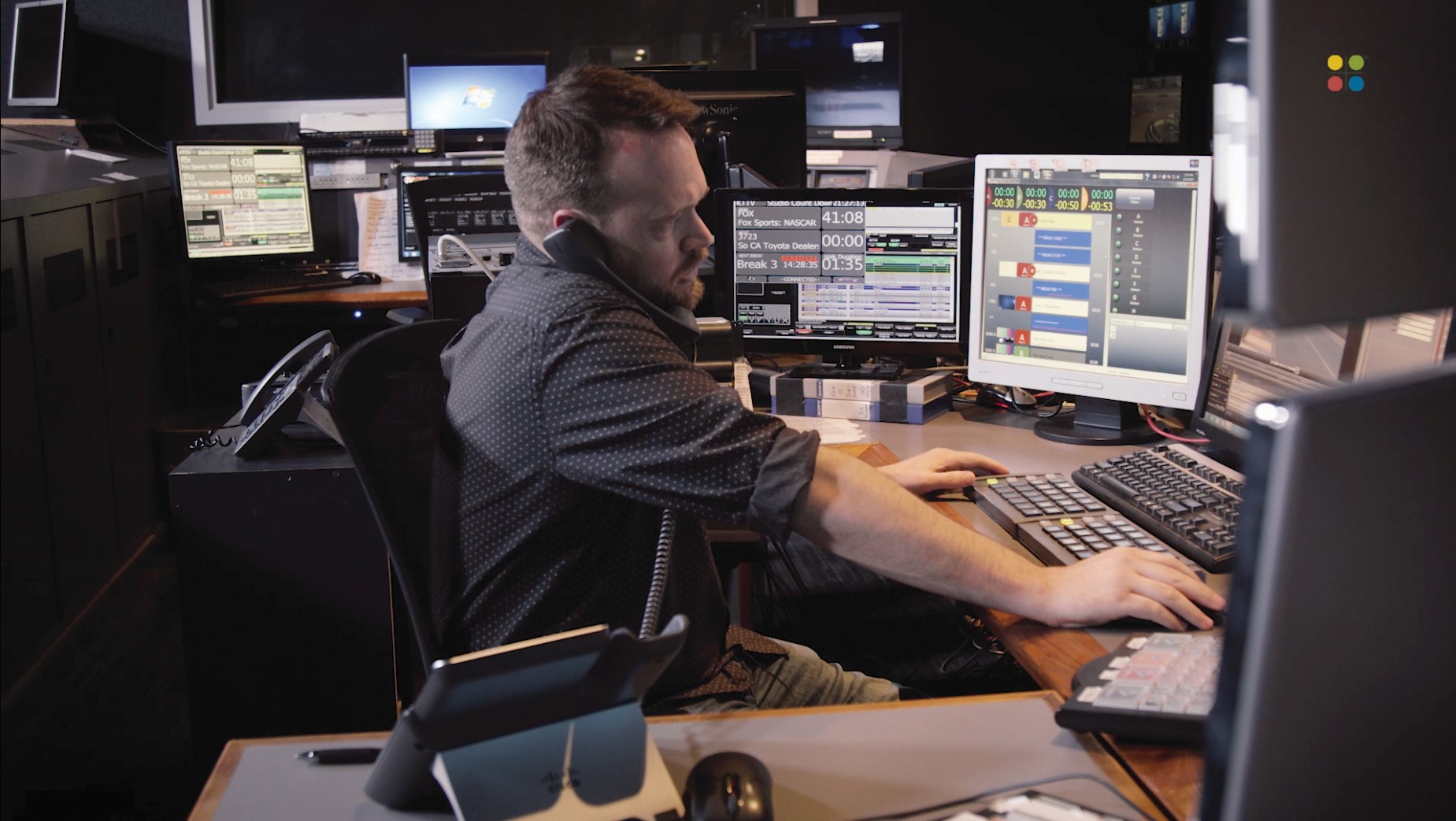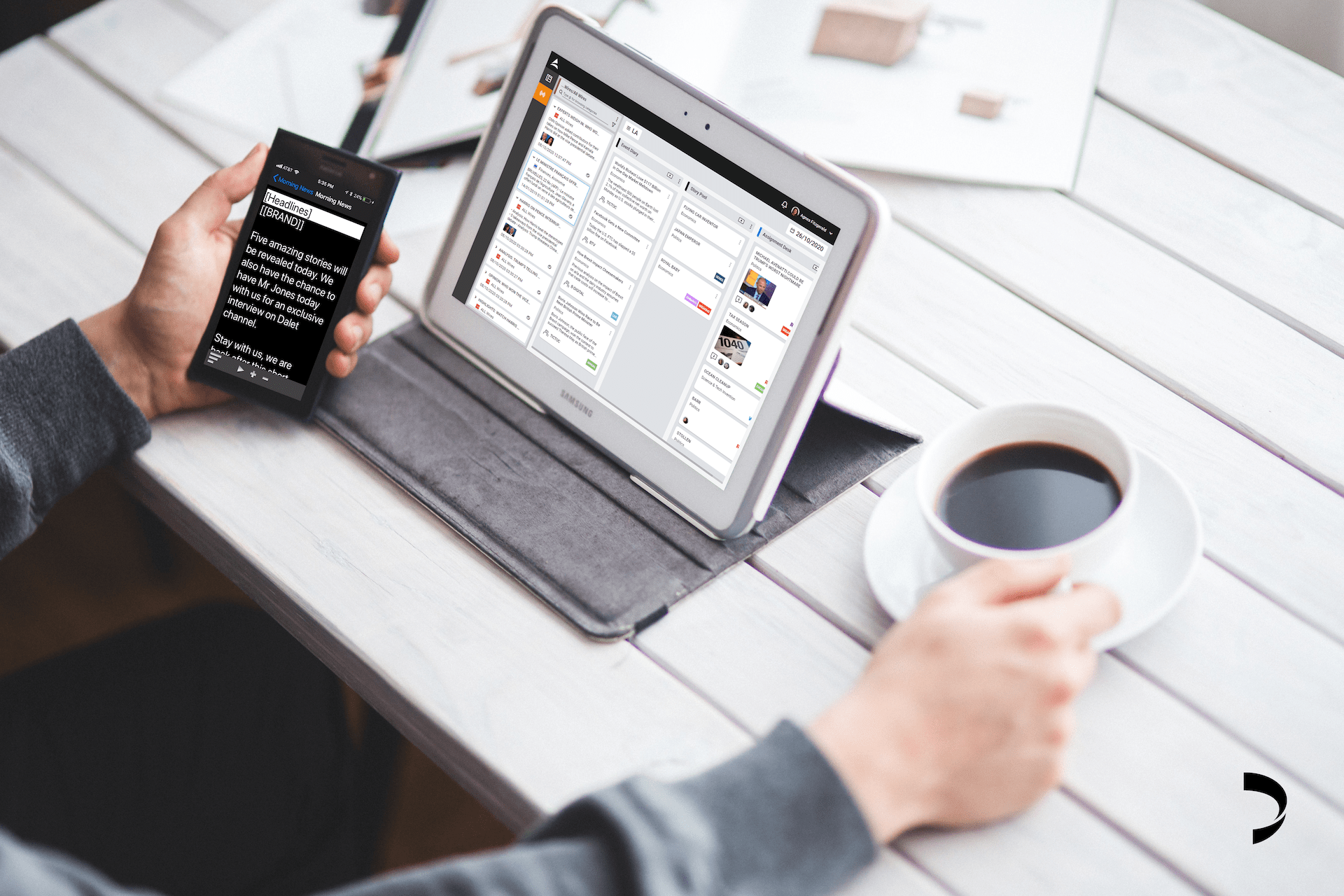News Production Adapts to Remote Trends
Pandemic accelerates move to the cloud, IP

OTTAWA—When the world went into lockdown last March due to COVID-19, all manner of companies sent their staff home to work remotely via the web. For many sectors, this unexpected move away from the office was difficult to support using their existing software/ IT infrastructures. But for the firms who make multiplatform news production software, it wasn’t— because the pandemic simply accelerated a trend that was already underway.
This is certainly the case at Avid, which is well-known for its MediaCentral media workflow platform. “We have accelerated this transition towards the cloud as an enabler for remote production,” said Raúl Alba, Avid’s director of product marketing for media and cloud. “Everything that we are doing is designed to help our clients move to the cloud, or be deployed on premises and accessed remotely.”
The same is true at Dalet. “Even before COVID, we had already planned to increase our capability to do more with mobility and have a web client that can be used from anywhere with no compromise in functionality,” said Raoul Cospen, Dalet’s director of product strategy, News. The just-announced Dalet Pyramid newsroom system trumpets this precise capability under the slogan, “Create, anywhere, together.”
At the same time, skeptics in the broadcast news business opened up their minds to working remotely after the lockdowns began.
“As long as the delivery of jobs is seen to be safeguarded, news teams are happy to be given tools that enable them to be quicker and more responsive on a widening range of platforms,” said Michael Pfitzner, vice president of CGI Media Solutions. CGI’s OpenMedia enterprise newsroom system (developed by SCISYS, which the company acquired in 2019), allows users to search agency wires, schedule broadcasts, integrate with other broadcast systems like MAM/playout systems, and write and distribute news stories.
“Journalist buy-in is rarely an issue anymore as it was in the early days of moving to nonlinear systems,” Pfitzner added

THE DRIVING FORCE
To distribute digital content to multiple platforms, newsroom software and the content it manages has to be remotely accessible and modifiable over IP networks.
Get the TV Tech Newsletter
The professional video industry's #1 source for news, trends and product and tech information. Sign up below.
Operating newsroom software over a secure, reliable corporate LAN is one thing; providing this same functionality to remote users via the insecure, unreliable web is quite another. Fortunately companies were addressing this challenge before anyone had heard of COVID-19.
“IP has been a driving force in our product development for many years,” said Gerhard Lang, CTO of the Vizrt Group, whose open standard-based Viz Pilot Edge web client allows newsrooms to create all aspects of newscast production in the cloud, no matter which newsroom computer system (NRCS) they use.
“Initially, the focus was on how IP and the cloud would replace broadcasters’ on-premises SDI infrastructure,” Lang said. “This focus changed during the lockdowns, when remote users took charge of keeping broadcasters’ news and other programming on air.”
The nature of cloud-based NRSC software means that everyone accessing this platform is a remote user by definition, whether they are doing so from a station newsroom, a home office or on the road.
Whatever the location, Bitcentral’s Oasis, a field-centric, browser-based cloud contribution platform is designed to serve all of them equally, according to company CEO Fred Fourcher.
“Remote contribution was already being used by our Oasis broadcast clients prior to COVID-19,” he said. “Now that COVID-19 has resulted in an increase in people working out of the office, our clients are simply using this Oasis capability more.”
MEETING CUSTOMER NEEDS
The rapid increase in use of NRCS systems remotely hasn’t been without its hiccups.
“We had to help a number of our customers enable their users to work away from the office home,” said Dalet’s Cospen. “Not everyone was ready to do so, which is why we quickly created and llaunched our cloud-based Dalet Galaxy xCloud platform for them to use.”
Other vendors have been tweaking their current products to better support remote production, while developing new products that take this capability even further.
CGI pivoted during this period to ensure its products remain relevant in the work-from-home environment, according to Pfitzner.
“We recognize the importance of staying connected, especially when many organizations have no choice, all while remaining cost-efficient and within budget,” he said. “Among other things, this has meant establishing professional tools for delivering platform-agnostic content and establishing these within our current and future feature sets.”
In the same vein, Avid’s MediaCentral was enhanced with the introduction of mobile apps and support for third-party NRCS in November 2020. “The new remote workflow capabilities in MediaCentral give creative teams the capabilities and confidence to create more content in shorter timeframes regardless of location,” said Avid's Raúl Alba.
This kind of flexibility is what customers want. “What they’re asking us to do is to build much more sophisticated editing products that can run in a web browser, where you could make something that’s perfectly good to put on mainstream TV broadcast,” said Trevor Francis, Grass Valley’s business development manager.
Bitcentral has responded to current events by updating its browser-based tools. “Customers can already remotely schedule/edit incoming satellite and other feeds that are recorded at the station,” said Foucher. “In line with the trend to increased remote access, we are adding more features to our timeline tools to be even more powerful from anywhere.”
By sheer good fortune and forward-looking vision, Primestream had its Xchange Media Cloud For Remote Content Creation in development prior to the pandemic, and released it in April 2020. “With Xchange Media Cloud, we’re bringing the robust functionality of our enterprise-grade Xchange MAM right to their remote workstations,” said Claudio Lisman, president and CEO of Primestream. “Before the pandemic, a lot of remote news production was fed using satellite uplinks/flyaways or by microwave. Today, most of the contribution comes from either online video encoders or bonded cellular devices. Xchange Media Cloud can handle all the recording, editing and playout of these IP contribution sources in the cloud.”
WHAT’S NEXT?
Once vaccinations become commonplace and restrictions are lifted, Grass Valley’s Francis doesn’t expect the remote production trend to be reversed. “People may never go back to working five days a week in the office,” he said. “They may work at home most of the time and go to the office some of the time.”
In fact, the logical outcome of this remote production trend is for some or all of today’s physical TV production/facilities to become virtual, with broadcasters simply leasing access to them as needed, working wherever they choose.
For instance, “we believe that technology like teleportation—the capability of placing two individuals from two different locations and greenscreens onto a single virtual set where they can interact as if they were in the same room, and which we pioneered years ago, has found its time,” said Vizrt’s Lang. “It will become a common way of conducting interviews or staging chat shows.”
Last spring, Vizrt demonstrated this “teleportation” type technology using its Vizrt Engine 4.1 platform to make it appear that Lang and Chris Black, Vizrt’s head of brand and content, carried on a live, one-on-one conversation as if they were in the same room—but were more than 1,000 miles apart.

The disruptive nature of the cloud has allowed more people to work remotely with more power and more efficiency than ever before and will continue to reshape newsroom delivery, CGI’s Pfitzner said. “We can see smaller production sites becoming much more central to many organizations as a result, and at some point, in the future, the physical nature of the newsroom as we know it of a contiguous space dedicated to a sole task might end up disappearing too.”
On a larger scale, Grass Valley’s new Agile Media Processing Platform (AMPP), which offers cloud-based playout/master control functions on a subscription basis to broadcasters, can eliminate the need for a physical TV station/network altogether, according to Francis.
“AMPP is all about taking an entire production suite, including switchers and routers, and running it virtually in the cloud.” said Francis. “This will let customers build a TV studio on demand without having to buy tons of equipment and put it in a dedicated facility. They can access it all in the cloud.”
All told, COVID-19 has spurred news production software firms to move even more boldly into the cloud, and to extend the functionality previously reserved for the newsroom to the entire planet via the web.
James Careless is an award-winning journalist who has written for TV Technology since the 1990s. He has covered HDTV from the days of the six competing HDTV formats that led to the 1993 Grand Alliance, and onwards through ATSC 3.0 and OTT. He also writes for Radio World, along with other publications in aerospace, defense, public safety, streaming media, plus the amusement park industry for something different.

